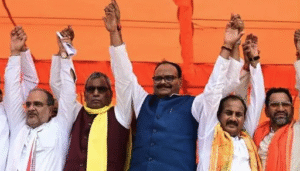Finance Minister Nirmala Sitharaman recently outlined the roadmap for GST 3.0 plans, explaining how the government will move forward after the implementation of GST 2.0. She highlighted that the Goods and Services Tax system has already gone through significant improvements under GST 2.0, and now the next phase will focus on more efficiency, transparency, and digital innovation.
According to the Finance Minister, GST 3.0 plans will aim to simplify tax procedures further. Businesses can expect smoother filing processes, fewer disputes, and improved clarity in compliance. By doing this, the government wants to reduce the burden on taxpayers and ensure that the system becomes more user-friendly.
Another key element in the next phase of GST reforms is the strengthening of digital systems. Authorities plan to expand data integration and make use of artificial intelligence for better monitoring. This step will not only improve compliance but also minimize chances of tax evasion.
While GST 2.0 introduced major changes in rate structures and filing mechanisms, GST 3.0 plans will go deeper into structural reforms. Nirmala Sitharaman emphasized that the government wants GST to evolve in line with India’s fast-growing economy. She also reassured industries that the reforms will encourage growth, make taxation fairer, and help states increase revenue without overburdening consumers.
The Finance Minister also hinted at more discussions with the GST Council before finalizing the framework of GST 3.0 plans. With these reforms, India looks forward to a tax system that reflects the needs of a modern economy.
Transitioning from GST 2.0 to GST 3.0 plans shows the government’s commitment to creating a stable, digital-first, and growth-friendly tax system.










